Abstract
Solutions of C-phycocyanin of very low concentrations were examined by sedimentation-velocity studies in the Spinco model E ultracentrifuge equipped with a photoelectric scanning system and a monochromator. At sufficiently low concentrations complete disaggregation from the hexamer to the monomer was observed. The equilibrium constant of monomer to hexamer was estimated to be approx. 1030. For studies of aggregation over the complete range of concentration, C-phycocyanins from Phormidium luridum and Lyngbya sp. were used. Sedimentation-velocity studies at high concentration with schlieren optics are reported for C-phycocyanins from Anabaena variabilis and Lyngbya sp. The pH-dependence of aggregation and the temperature-dependence of trimer–hexamer equilibrium for phycocyanins from these algae were found to be similar to those of other C-phycocyanins. The principal feature of the pH-dependence is the dominance of hexamers at the isoelectric point. Increasing temperature increased the amount of hexamer and decreased the amount of trimer.
Full text
PDF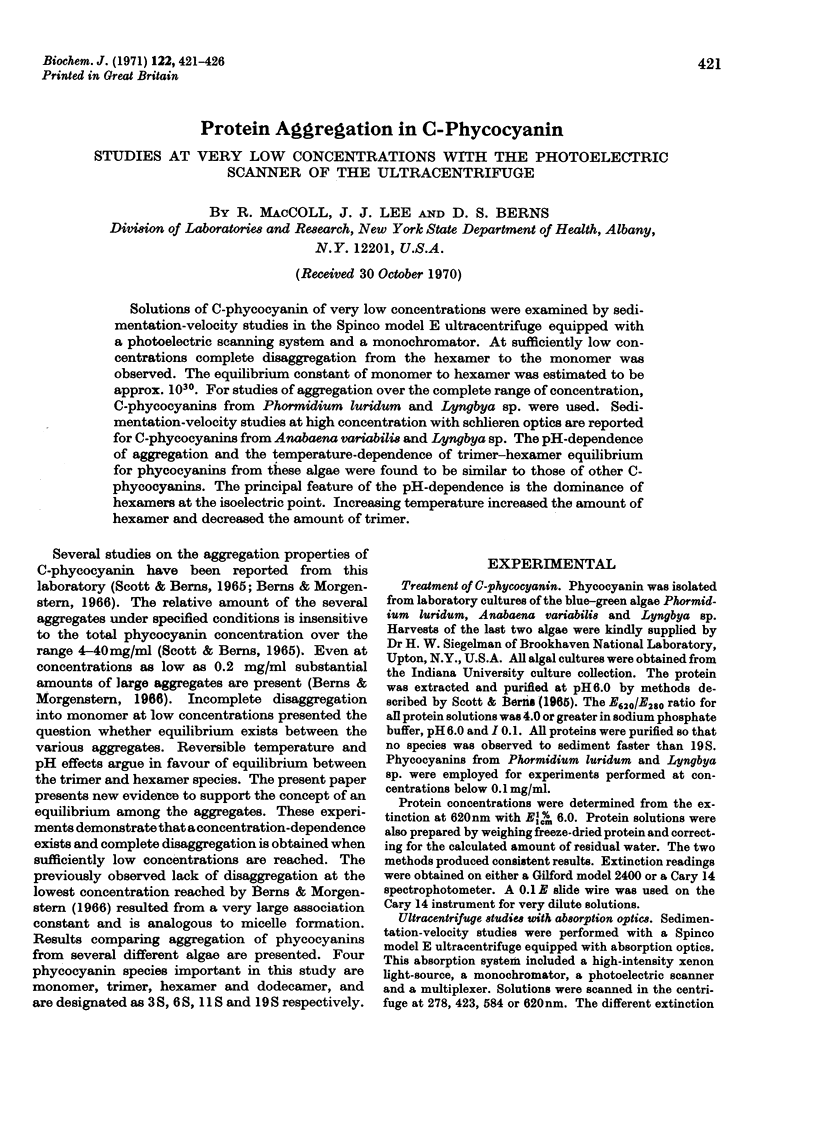
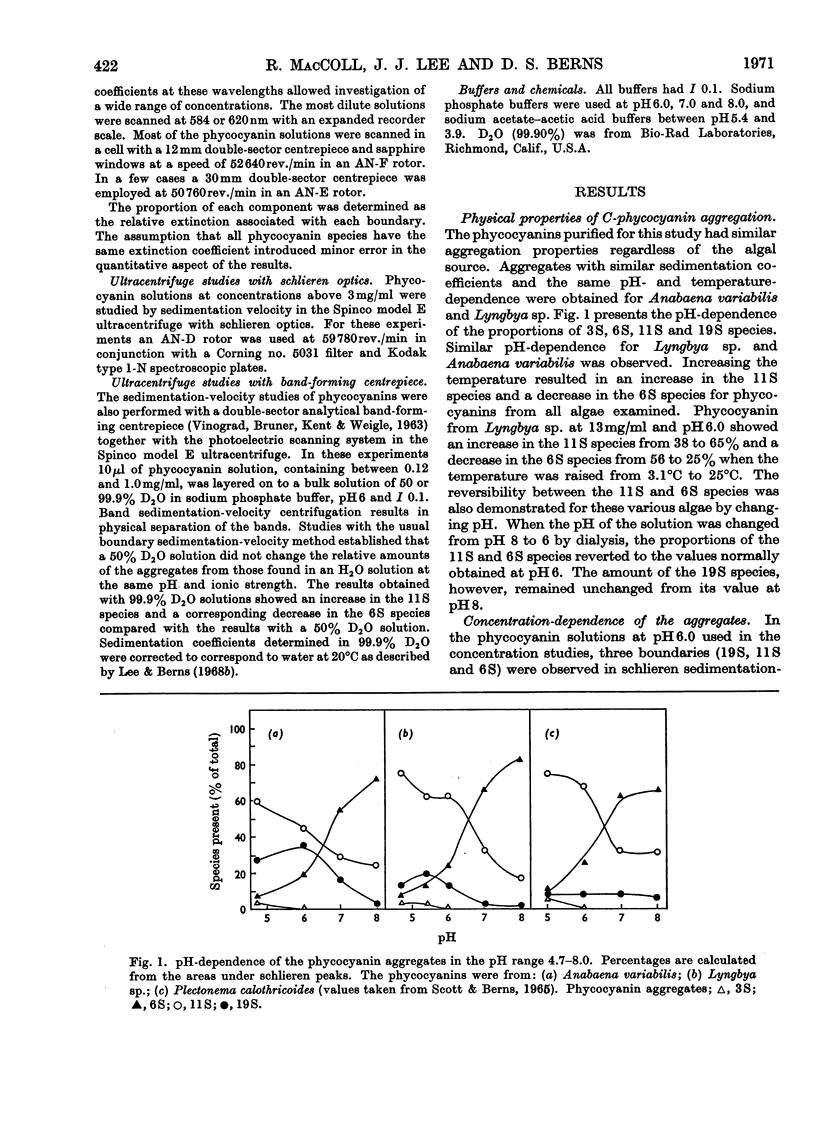

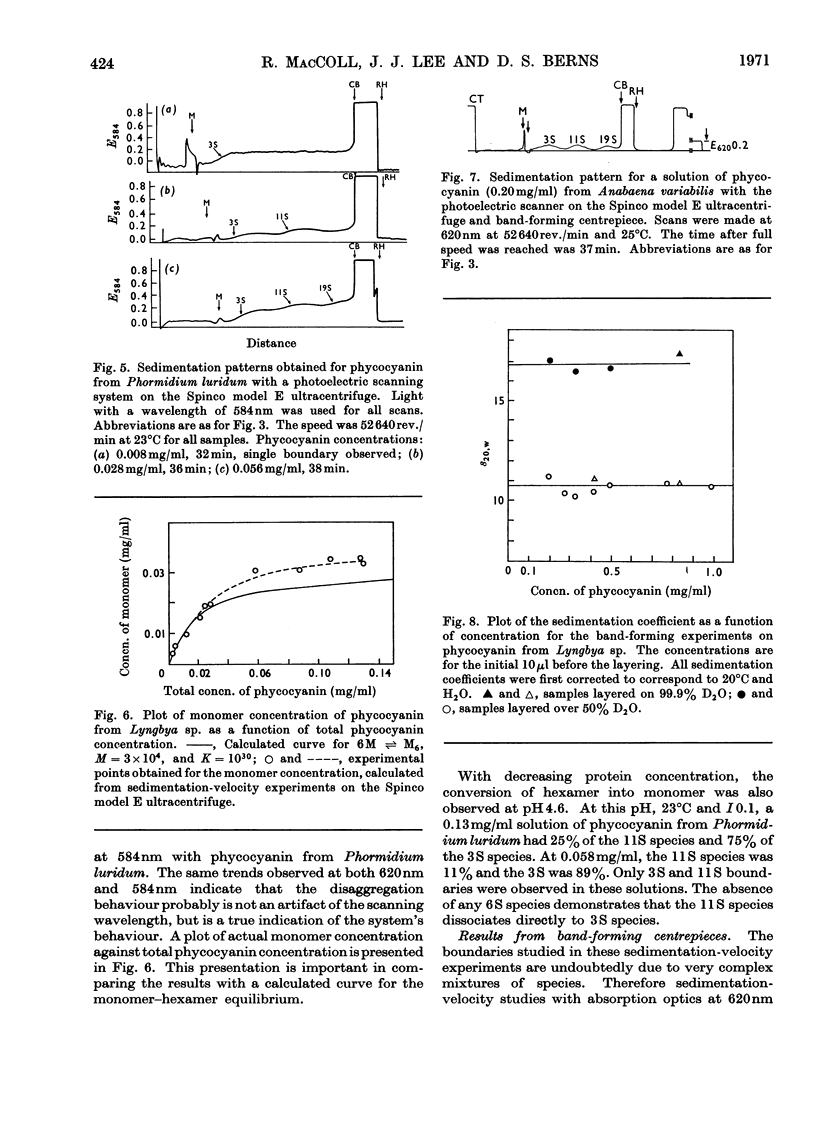
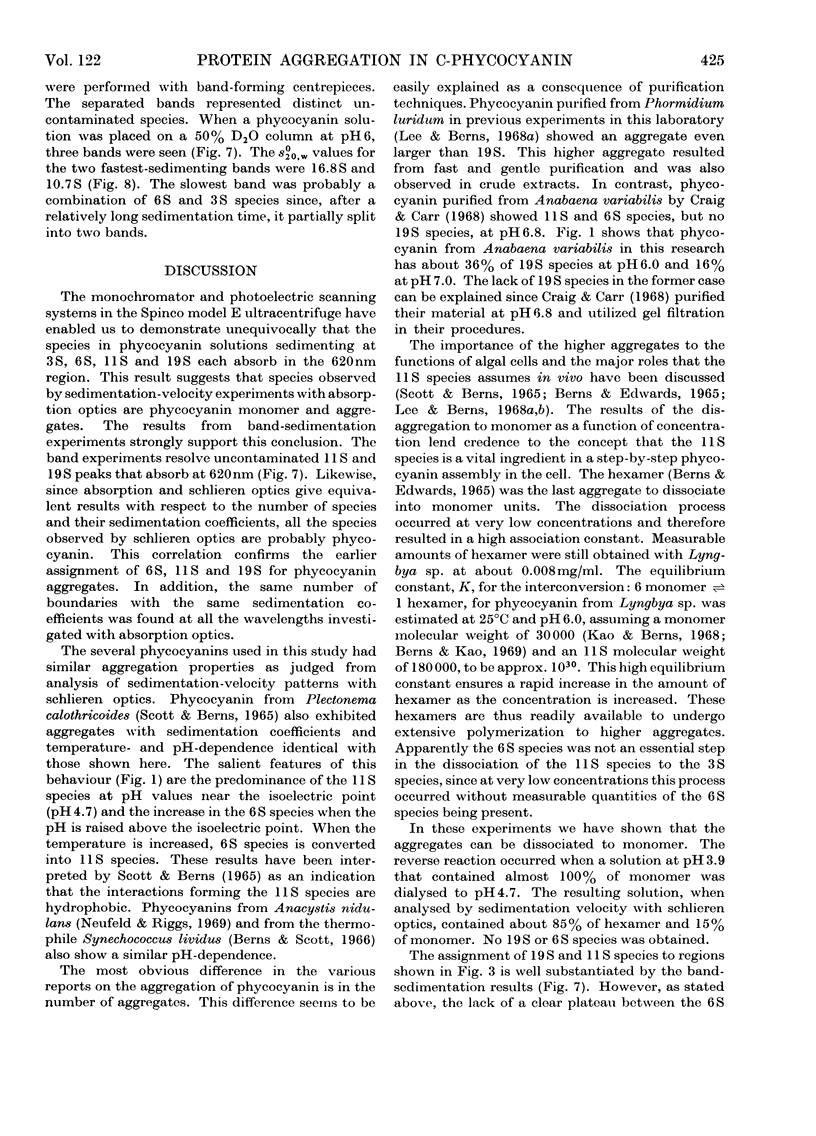
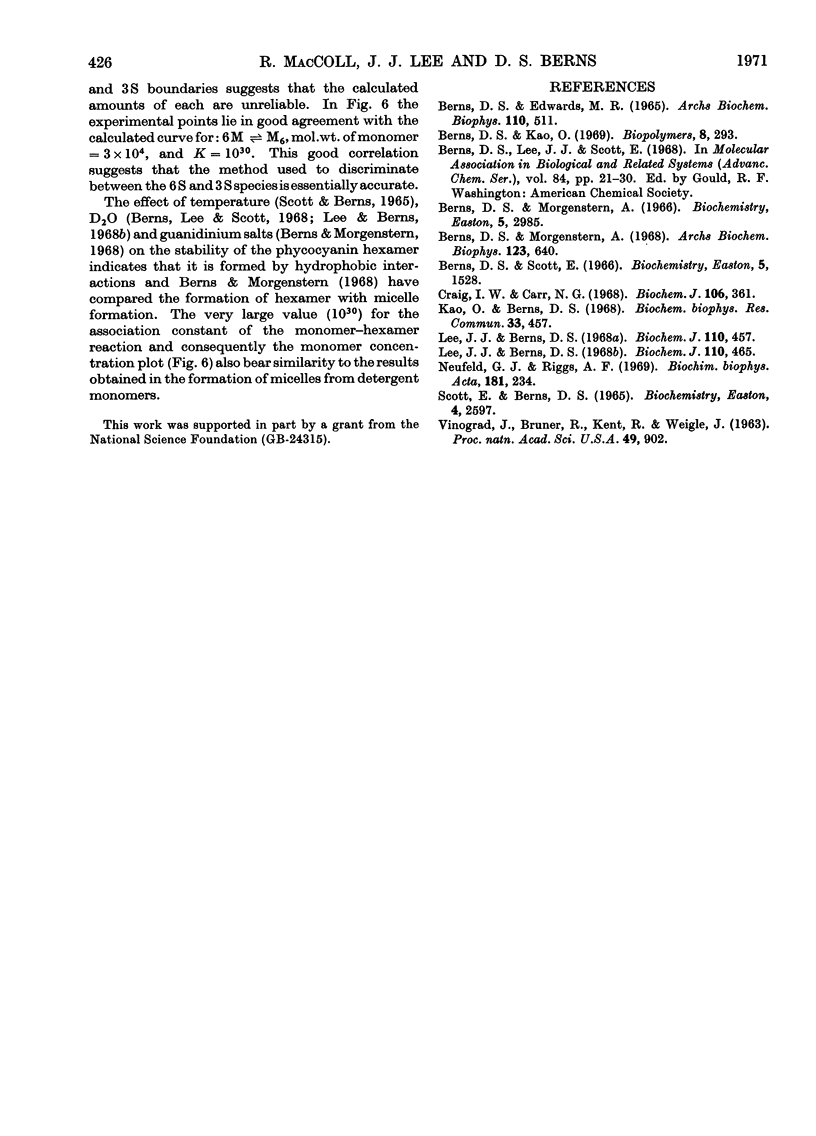
Images in this article
Selected References
These references are in PubMed. This may not be the complete list of references from this article.
- Berns D. S., Edwards M. R. Electron micrographic investigations of C-phycocyanin. Arch Biochem Biophys. 1965 Jun;110(3):511–516. doi: 10.1016/0003-9861(65)90444-3. [DOI] [PubMed] [Google Scholar]
- Berns D. S., Kao O. Molecular weight and dimensions of phycocyanin monomer and aggregates. Biopolymers. 1969 Aug;8(2):293–295. doi: 10.1002/bip.1969.360080214. [DOI] [PubMed] [Google Scholar]
- Berns D. S., Morgenstern A. Two denaturant effects of guanidine salts on the protein C-phycocyanin. Arch Biochem Biophys. 1968 Mar 11;123(3):640–642. doi: 10.1016/0003-9861(68)90185-9. [DOI] [PubMed] [Google Scholar]
- Berns D. S., Morgenstern A. Ultracentrifuge investigation of protein aggregation in dilute solutions of C-phycocyanin. Biochemistry. 1966 Sep;5(9):2985–2990. doi: 10.1021/bi00873a030. [DOI] [PubMed] [Google Scholar]
- Craig I. W., Carr N. G. C-phycocyanin and allophycocyanin in two species of blue-green algae. Biochem J. 1968 Jan;106(2):361–366. doi: 10.1042/bj1060361. [DOI] [PMC free article] [PubMed] [Google Scholar]
- Kao O., Berns D. S. The monomer molecular weight of C-phycocyanin. Biochem Biophys Res Commun. 1968 Nov 8;33(3):457–462. doi: 10.1016/0006-291x(68)90595-0. [DOI] [PubMed] [Google Scholar]
- Lee J. J., Berns D. S. Protein aggregation. Studies of larger aggregates of C-phycocyanin. Biochem J. 1968 Dec;110(3):457–464. doi: 10.1042/bj1100457. [DOI] [PMC free article] [PubMed] [Google Scholar]
- Lee J. J., Berns D. S. Protein aggregation. The effect of deuterium oxide on large protein aggregates of C-phycocyanin. Biochem J. 1968 Dec;110(3):465–470. doi: 10.1042/bj1100465. [DOI] [PMC free article] [PubMed] [Google Scholar]
- Neufeld G. J., Riggs A. F. Aggregation properties of C-Phycocyanin from Anacystis nidulans. Biochim Biophys Acta. 1969 May;181(1):234–243. doi: 10.1016/0005-2795(69)90246-3. [DOI] [PubMed] [Google Scholar]
- Scott E., Berns D. S. Protein-protein interaction. The phycocyanin system. Biochemistry. 1965 Dec;4(12):2597–2606. doi: 10.1021/bi00888a008. [DOI] [PubMed] [Google Scholar]
- VINOGRAD J., BRUNER R., KENT R., WEIGLE J. Band-centrifugation of macromolecules and viruses in self-generating density gradients. Proc Natl Acad Sci U S A. 1963 Jun;49:902–910. doi: 10.1073/pnas.49.6.902. [DOI] [PMC free article] [PubMed] [Google Scholar]



